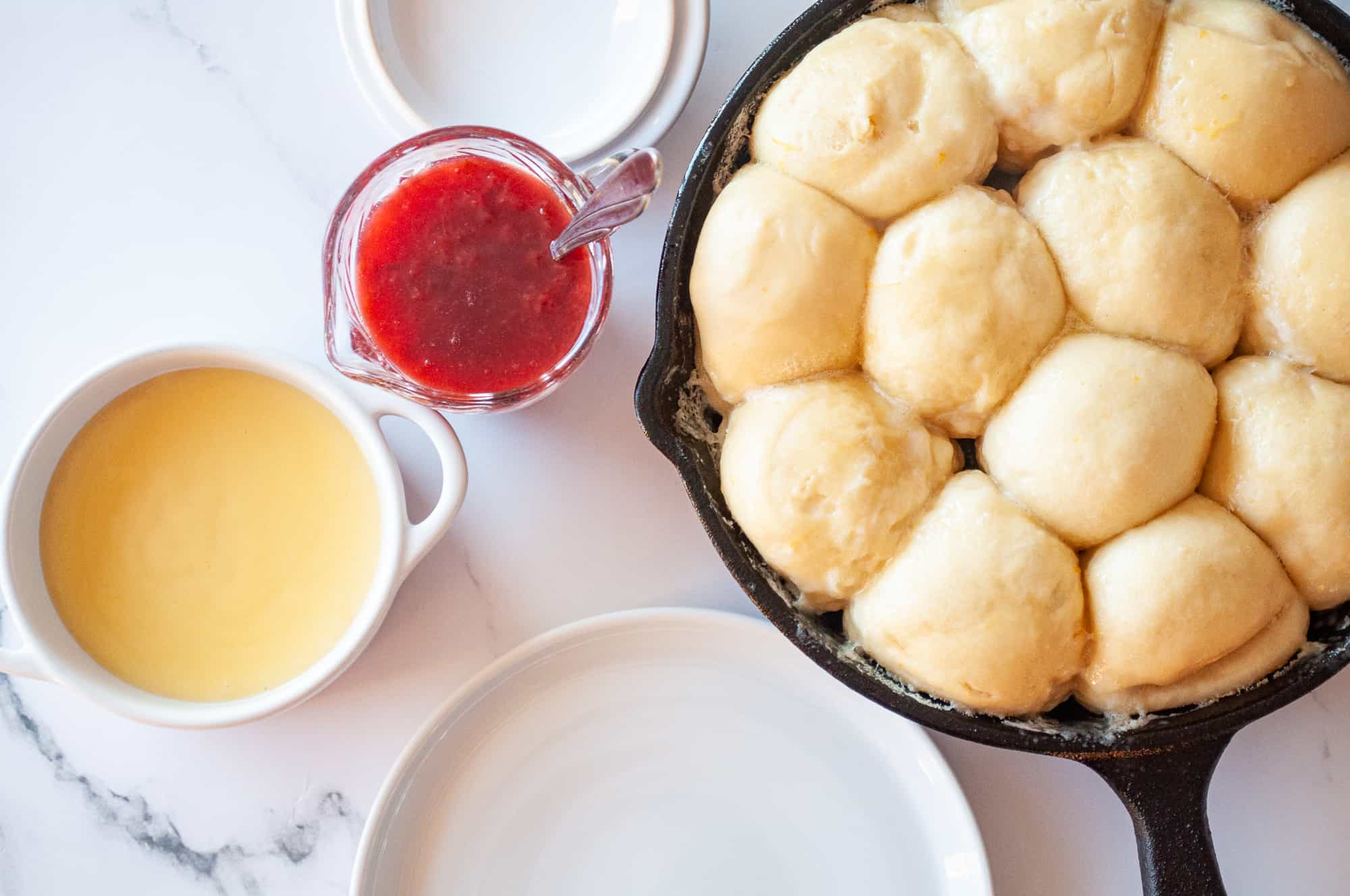
Dampfnudel is a traditional German steamed dumpling, often enjoyed as a sweet or savory dish. Originating from southern Germany, this fluffy treat has a rich history and cultural significance. Did you know that Dampfnudel dates back to the 16th century? It's typically made from a simple dough of flour, yeast, milk, butter, and a pinch of salt. These dumplings are steamed in a pot with a bit of milk and butter, creating a deliciously soft texture with a golden-brown crust on the bottom. Whether served with vanilla sauce, fruit compote, or even savory gravy, Dampfnudel offers a versatile culinary experience. Curious about more intriguing facts? Let's dive into 29 fascinating tidbits about this beloved German delicacy!
What is Dampfnudel?
Dampfnudel is a traditional German dish that has been enjoyed for centuries. These fluffy steamed buns are often served with a variety of accompaniments, making them a versatile and beloved part of German cuisine. Let's dive into some fascinating facts about Dampfnudel.
- Dampfnudel translates to "steam noodle" in English, reflecting its cooking method.
- Originating in Southern Germany, particularly in Bavaria and Swabia, Dampfnudel has regional variations.
- Traditionally, Dampfnudel is made from a simple dough of flour, yeast, milk, butter, and a pinch of salt.
- The dough is allowed to rise before being steamed in a pot with a bit of milk and butter, creating a soft, pillowy texture.
- A golden-brown crust forms on the bottom of the bun due to the caramelization of milk and butter during steaming.
- Dampfnudel can be served as a savory dish with gravy or as a sweet treat with vanilla sauce, fruit compote, or powdered sugar.
- In Bavaria, Dampfnudel is often enjoyed with a savory mushroom sauce or a hearty meat stew.
- In Palatinate, a region in southwestern Germany, Dampfnudel is typically served with a sweet wine sauce or fruit preserves.
- The dish is similar to the Austrian "Germknödel," which is filled with plum jam and topped with poppy seeds and melted butter.
- Dampfnudel is also related to the Czech "buchty," which are baked rather than steamed and often filled with sweet fillings.
Historical Significance of Dampfnudel
Dampfnudel has a rich history that reflects the cultural and culinary traditions of Germany. Here are some historical facts about this beloved dish.
- Dampfnudel dates back to at least the 16th century, making it a time-honored German tradition.
- It was originally a peasant dish, made from simple, affordable ingredients that were readily available.
- During times of scarcity, Dampfnudel provided a filling and nutritious meal for families.
- The dish became popular in monasteries, where monks would prepare it as a communal meal.
- Dampfnudel was often served during religious festivals and celebrations, symbolizing abundance and togetherness.
- The recipe for Dampfnudel has been passed down through generations, with each family adding their unique twist.
Dampfnudel in Modern Cuisine
While Dampfnudel remains a traditional dish, it has also found its place in modern cuisine. Here are some contemporary facts about Dampfnudel.
- Many German restaurants and bakeries offer Dampfnudel as a specialty item on their menus.
- Chefs have experimented with various fillings and toppings, creating innovative versions of the classic dish.
- Vegan and gluten-free versions of Dampfnudel are now available, catering to diverse dietary preferences.
- Dampfnudel has gained international recognition, with food enthusiasts around the world eager to try this German delicacy.
- Cooking shows and food blogs have featured Dampfnudel, showcasing its versatility and appeal.
- Some modern recipes incorporate ingredients like herbs, spices, and cheese to enhance the flavor of Dampfnudel.
Fun Facts About Dampfnudel
Dampfnudel is not just a delicious dish; it also has some fun and quirky aspects. Here are some light-hearted facts about Dampfnudel.
- In Germany, there is a saying, "Das ist mir Wurst," which means "It's all the same to me." A playful twist on this is "Das ist mir Dampfnudel," implying that everything is as comforting as Dampfnudel.
- Dampfnudel has inspired songs, poems, and even children's stories in German culture.
- There are Dampfnudel festivals in some German towns, where locals and visitors celebrate the dish with cooking demonstrations and tastings.
- The largest Dampfnudel ever made weighed over 200 kilograms and was created in the town of Freckenfeld in 2010.
- Dampfnudel is sometimes referred to as "the German donut," although it is steamed rather than fried.
- In some regions, Dampfnudel is considered a comfort food, often enjoyed during cold winter months.
- The dish has a nostalgic appeal for many Germans, evoking memories of family gatherings and home-cooked meals.
Final Thoughts on Dampfnudel
Dampfnudel is more than just a tasty treat. This German steamed dumpling has a rich history and cultural significance. From its origins in Bavaria to its spread across Europe, it’s clear that Dampfnudel has won many hearts. Whether enjoyed sweet with vanilla sauce or savory with a hearty stew, it offers something for everyone.
Learning about Dampfnudel’s background, ingredients, and variations can deepen your appreciation for this delightful dish. Next time you’re in the mood for something comforting and unique, give Dampfnudel a try. You might find it becomes a new favorite in your culinary repertoire.
So, whether you're a seasoned foodie or just curious about different cuisines, Dampfnudel is worth exploring. Dive into its flavors and enjoy a piece of German culinary tradition right at your table.
Was this page helpful?
Our commitment to delivering trustworthy and engaging content is at the heart of what we do. Each fact on our site is contributed by real users like you, bringing a wealth of diverse insights and information. To ensure the highest standards of accuracy and reliability, our dedicated editors meticulously review each submission. This process guarantees that the facts we share are not only fascinating but also credible. Trust in our commitment to quality and authenticity as you explore and learn with us.
